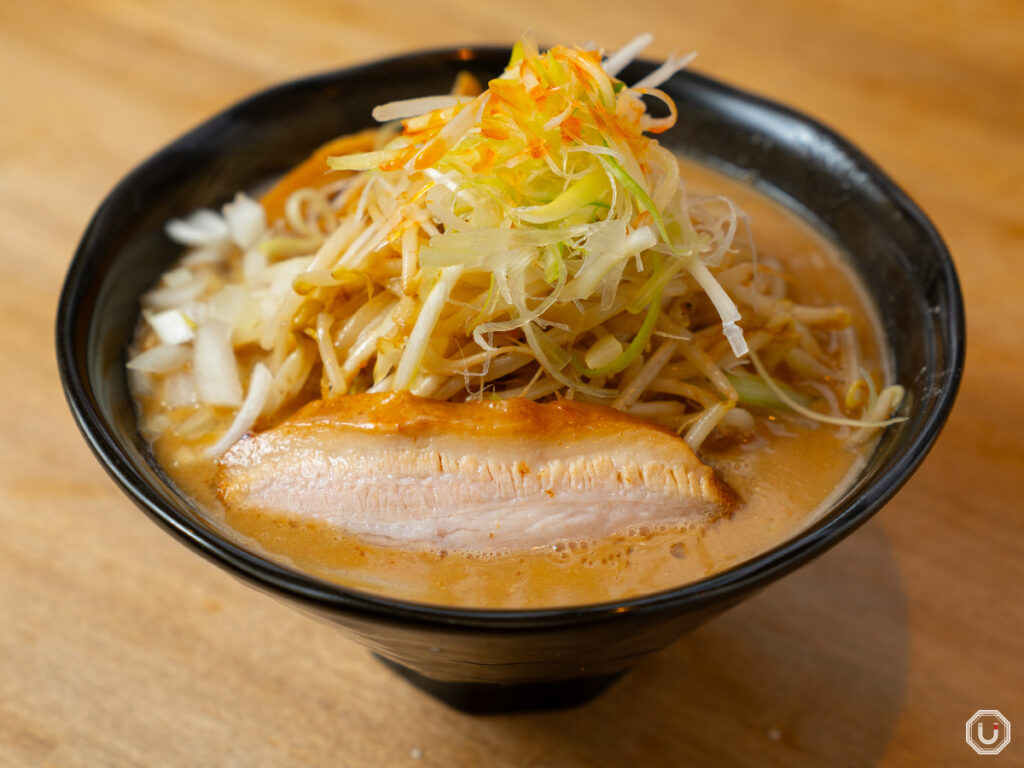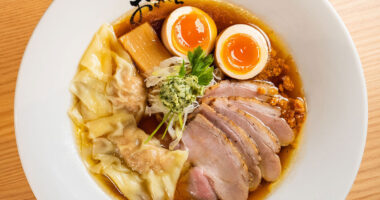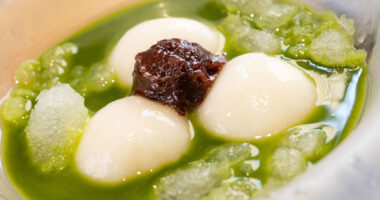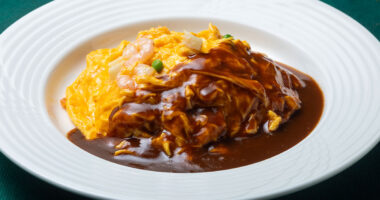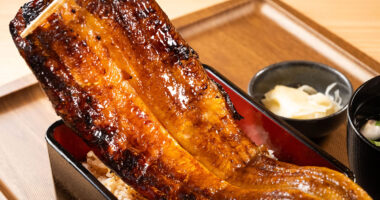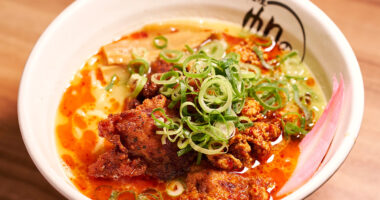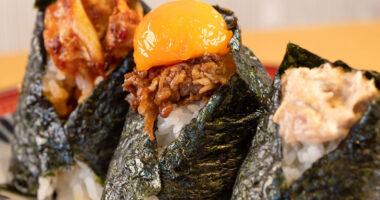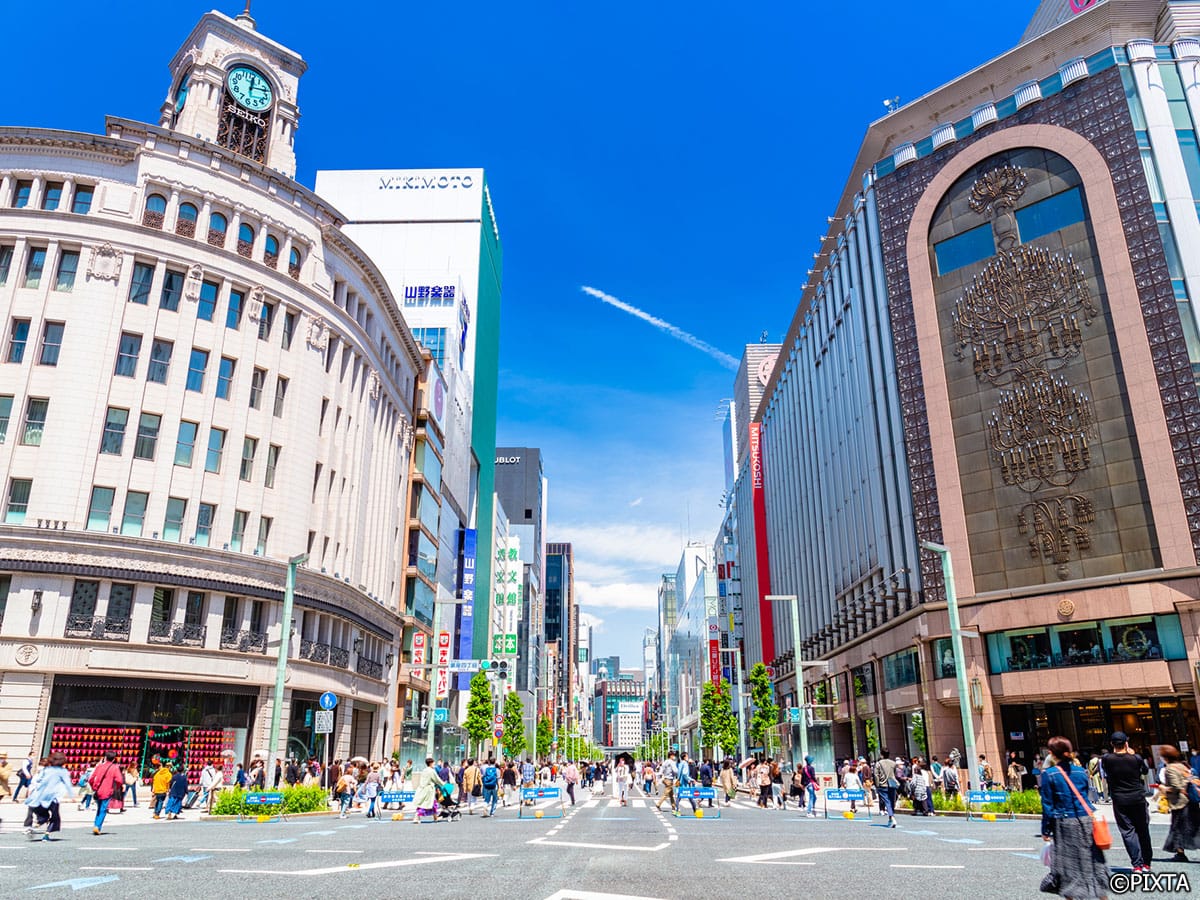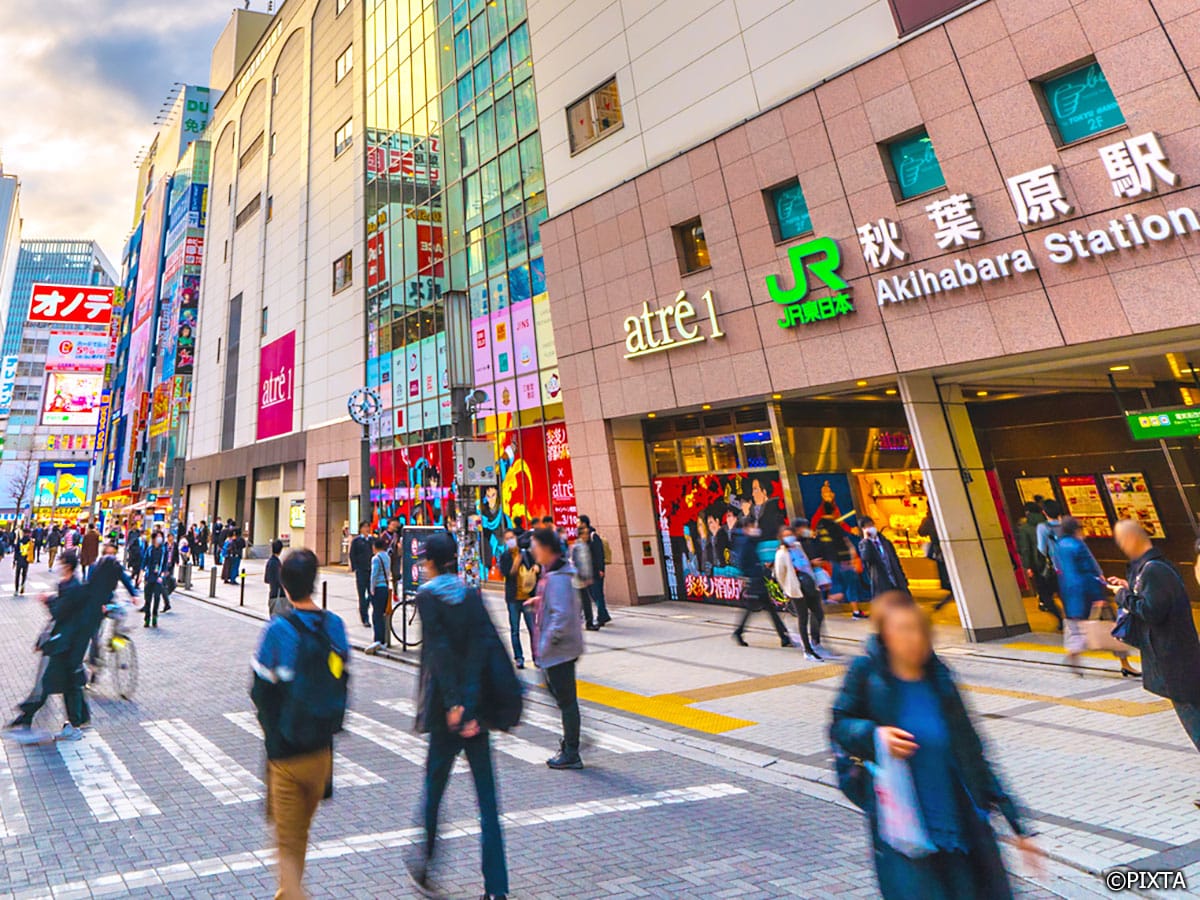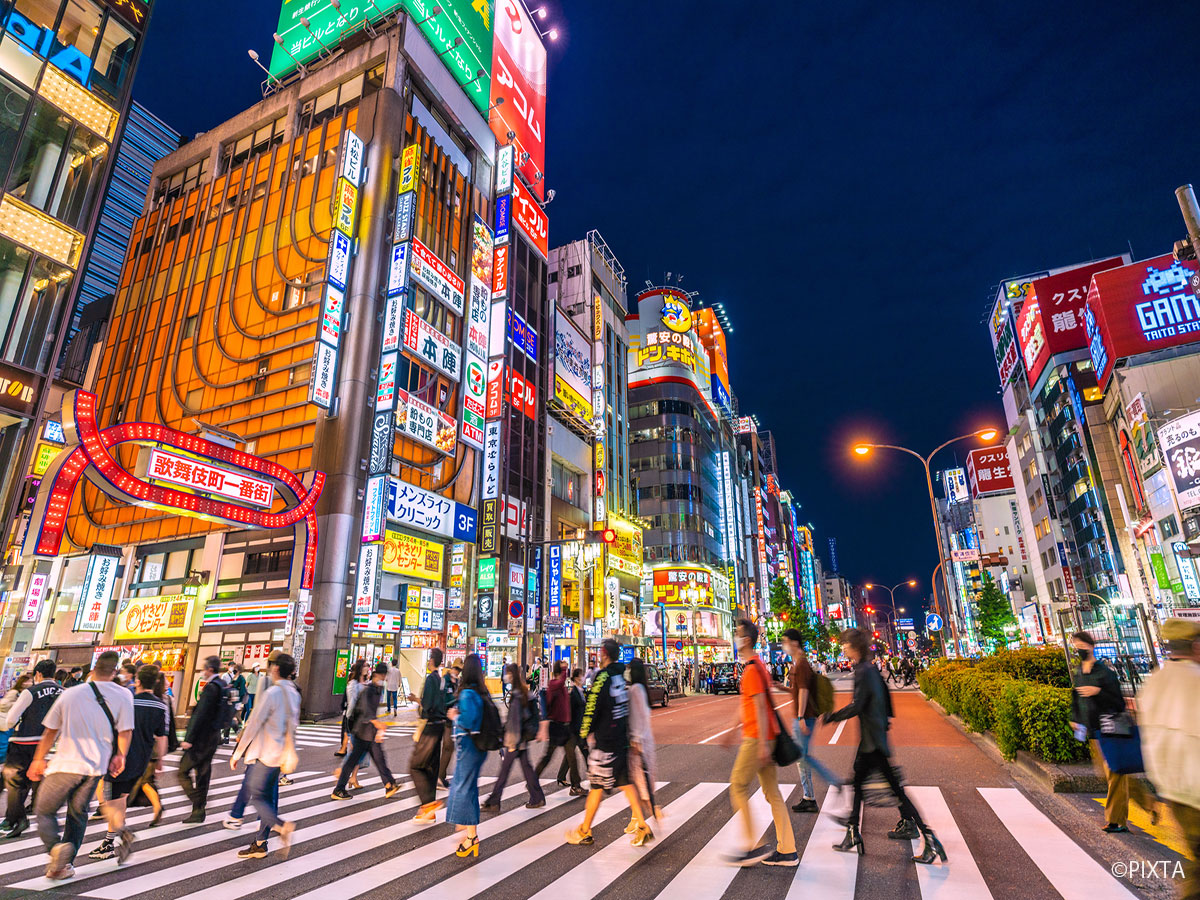Miso ramen, which originated in Hokkaidō, is now enjoyed throughout Japan as a standard ramen type.
Over time, it has evolved in various regions, and these days, it’s not uncommon to find specialty shops offering modern twists such as tsukemen (dipping noodles) and mazesoba (soupless ramen).
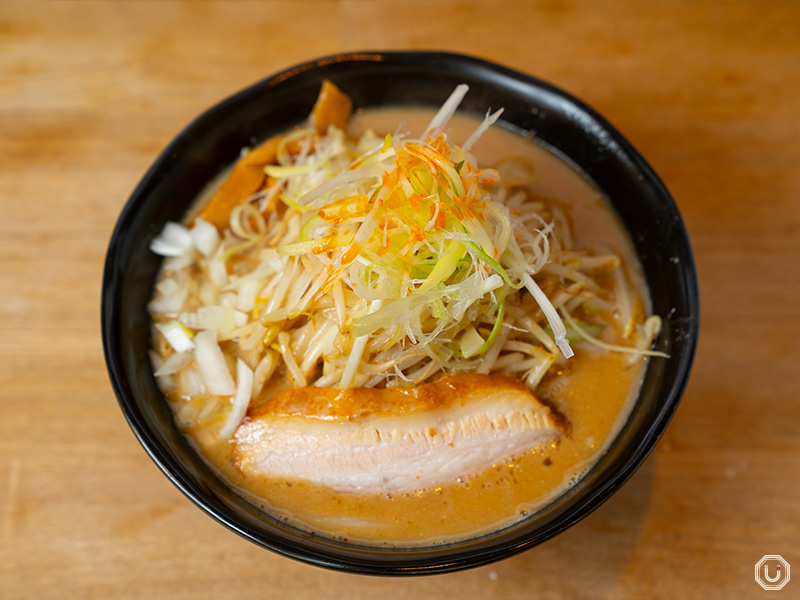
“味噌ラーメン,” Miso Ramen 990 JPY (tax included)
Located in the bustling area around one of Tokyo’s busiest stations, Ikebukuro Station, “Manbaken Daidai Ikebukuroten” (hereafter referred to as “Manbaken Daidai”) is a miso ramen specialty shop that has gained quite a lot of popularity.
Here, you can enjoy the full appeal of miso ramen in a variety of styles!
Part of the popular “Manbaken” brand, which also has stores in the Shinjuku and Setagaya areas of Tokyo, this branch specializes in classic-style miso ramen made the traditional way.
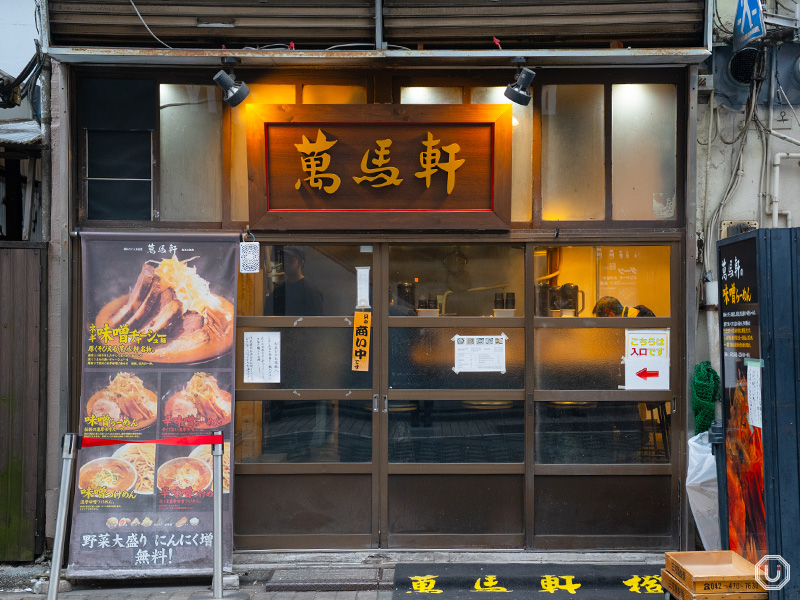
An irresistible miso ramen with concentrated umami
Miso, one of the fermented seasonings most emblematic of Japanese cuisine, comes in many varieties. For example, white miso tends to be sweeter, while red miso is richer with stronger saltiness—the flavor differs by color, which is a special characteristic of the ingredient.
Because miso has varying regional qualities, comparing the taste of miso from different parts of Japan is highly recommended.
Manbaken Daidai uses carefully selected white and red miso from Nagano Prefecture, one of Japan’s most famous miso-producing regions. The restaurant blends these two types in a unique ratio.
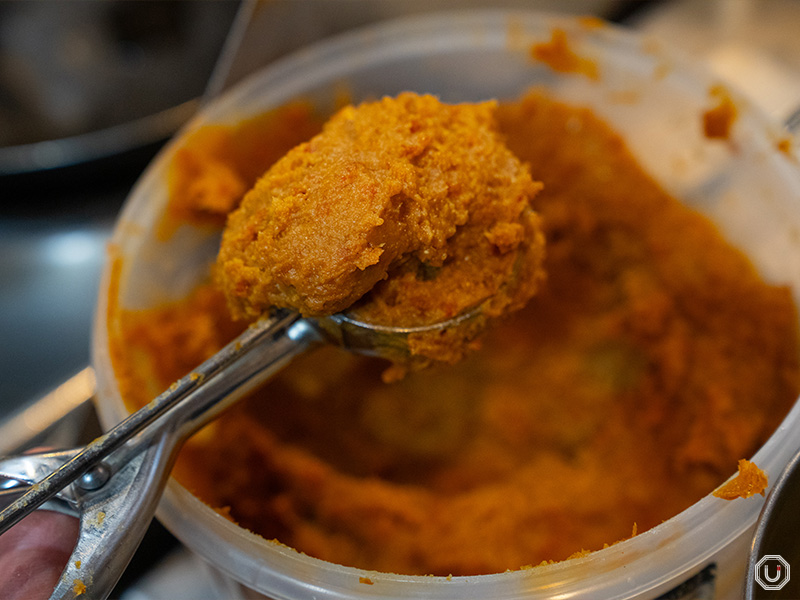
The soup is prepared using the traditional miso ramen technique of stir-frying the ingredients together.
First, vegetables such as bean sprouts, cabbage, and onions are added to a Chinese wok heated with lard and stir-fried over high heat. This removes excess moisture while enhancing the aromatic flavor and improving texture.
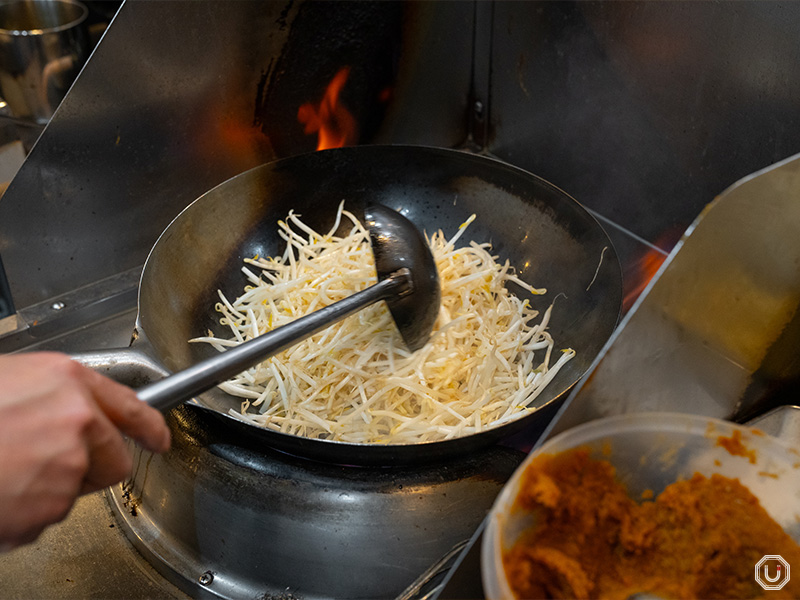
To this, they add miso and a broth made by simmering pork bones, chicken bones, and aromatic vegetables for a full day to extract umami. Once brought to a boil, the soup is complete.
Manbaken Daidai then elevates the flavor of the soup by adding fresh garlic and ginger.
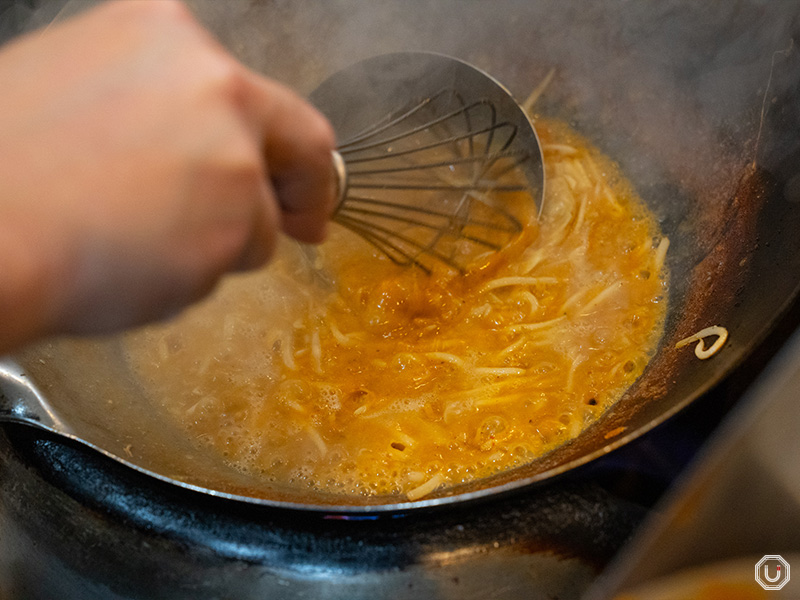
The soup has a rich, full-bodied flavor with no off-notes or heaviness, and a clean, refreshing aftertaste. Despite its deep umami, the more you drink, the more it settles and provides a comforting effect.
Thanks to the lard, the soup stays piping hot for longer.
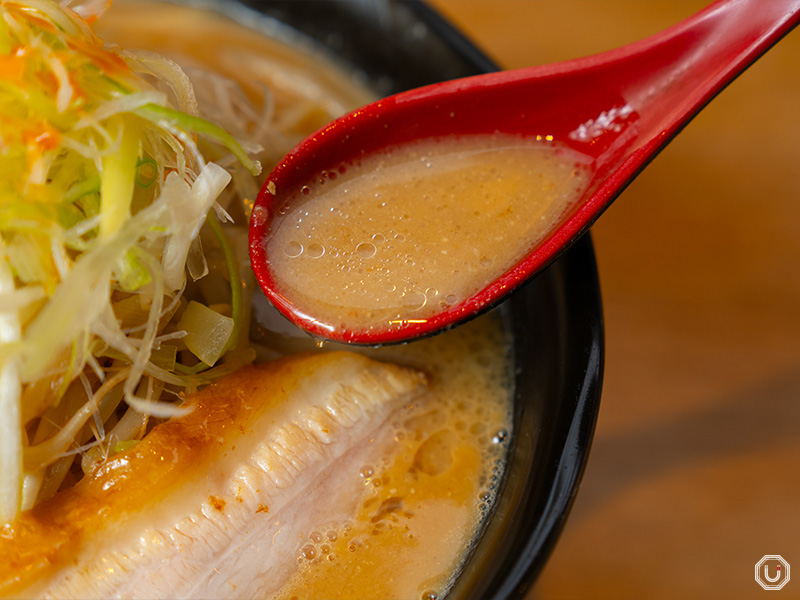
The noodles paired with this soup are original medium-thick noodles that stand up to the richness of the miso. They mix very well with the broth and have a pleasant chewiness.
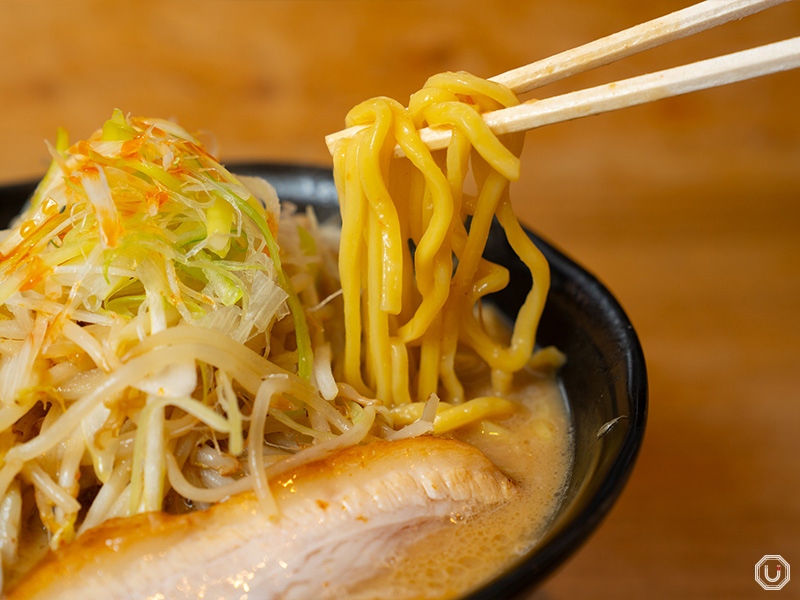
The ramen’s star ingredient, chāshū (Japan’s version of char siu), is also not to be missed.
At Manbaken Daidai, they use thick cuts of pork belly that have been slowly simmered in a soy-based sauce. The meat is so tender it can be pulled apart with chopsticks, yet it’s incredibly satisfying and hearty.
Other toppings include bean sprouts, cabbage, two kinds of onion (sliced and minced), and finely chopped green onions.
Customers can also extra vegetables and chopped garlic for free, so be sure to let the staff know when ordering.
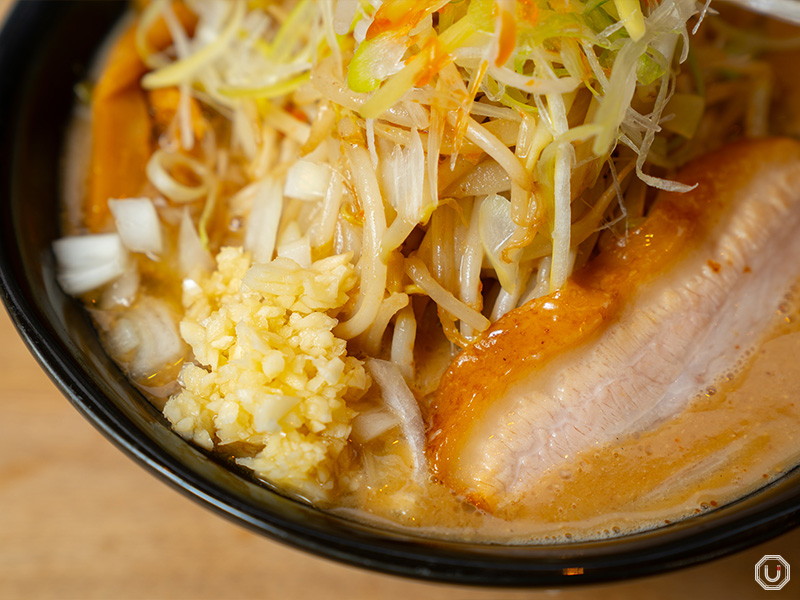
“Miso Tsukemen”: perfect for directly tasting the soup
Tsukemen is a style of ramen where you dip noodles (served on a separate plate) into a richer soup than regular ramen. Similar to zaru soba (chilled soba served on a bamboo tray), you pick up a mouthful of noodles and dip them in the soup before eating.
At Manbaken Daidai, backfat is added to the soup, giving it an extra layer of richness and impact.
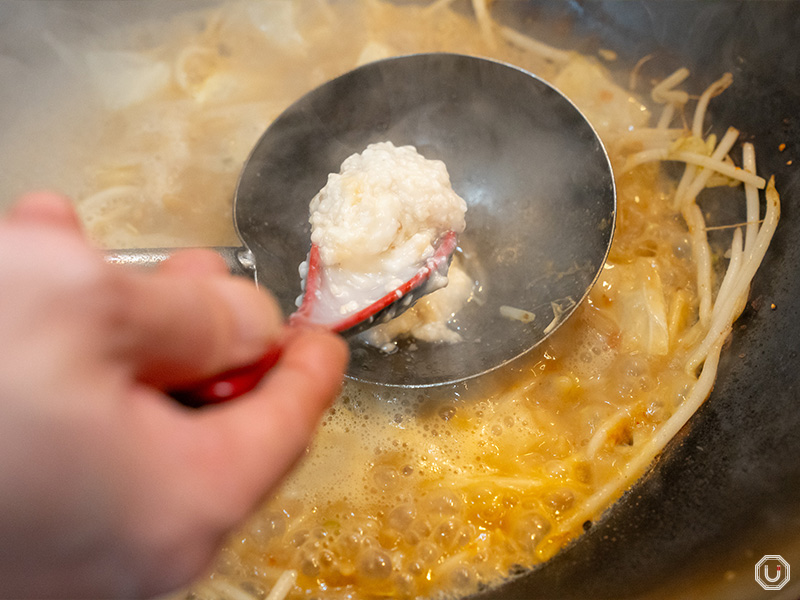
The noodles are usually served cold after being rinsed in cold water. If you prefer them hot, ask for atsumori when ordering.
After finishing your noodles, be sure to order a soup-wari (dashi broth to add in). Blending in the dashi mellows the saltiness, turning the soup into a perfectly drinkable finish.
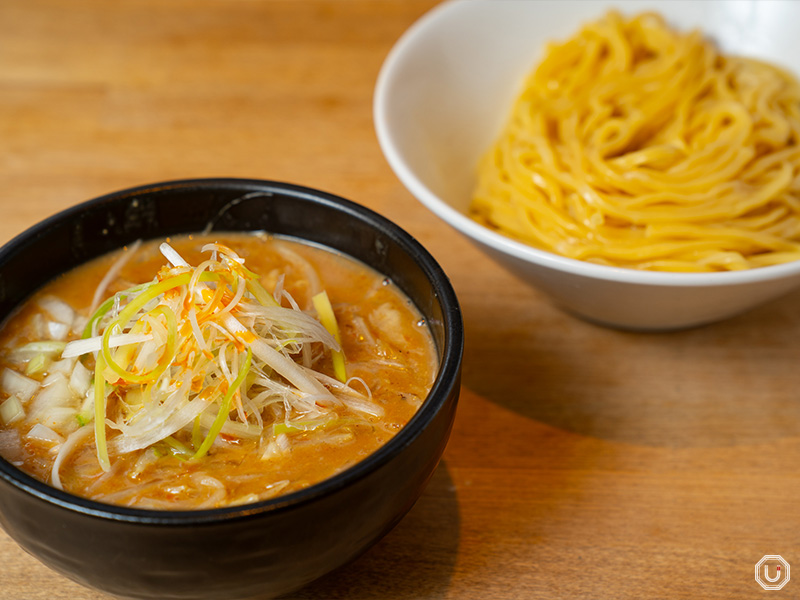
Miso Tsukemen 1,100 JPY (tax included)
Enjoy “Miso Mazesoba,” an evolution of miso ramen
Mazesoba is a brothless ramen style where noodles are mixed with a small amount of sauce and toppings.
Miso mazesoba is a rare find. At Manbaken Daidai, they add special soy sauce and fish powder to the sauce, emphasizing the dish’s Japanese flavors.
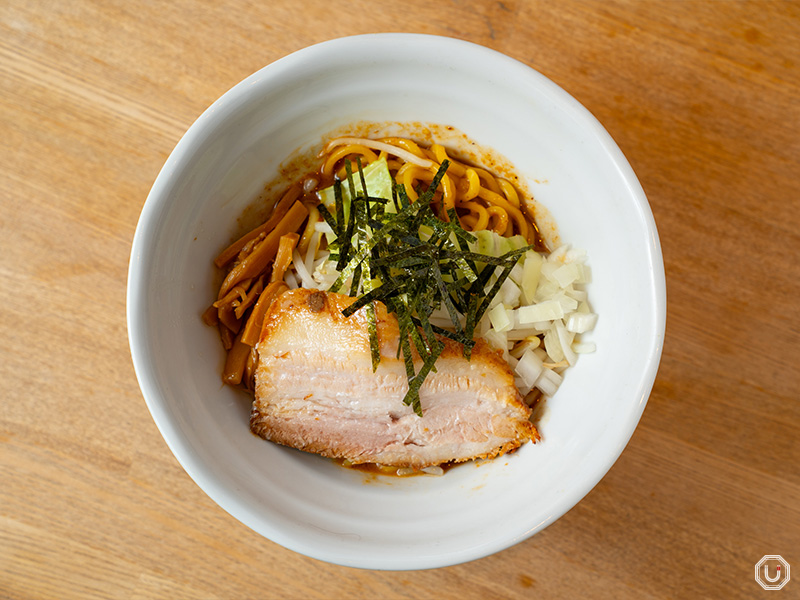
Since the sauce pools at the bottom, don’t hesitate to mix everything up vigorously when eating. A key point of mazesoba is that you can adjust the flavor as you eat, such as starting with the noodles first and then mixing in the ingredients.
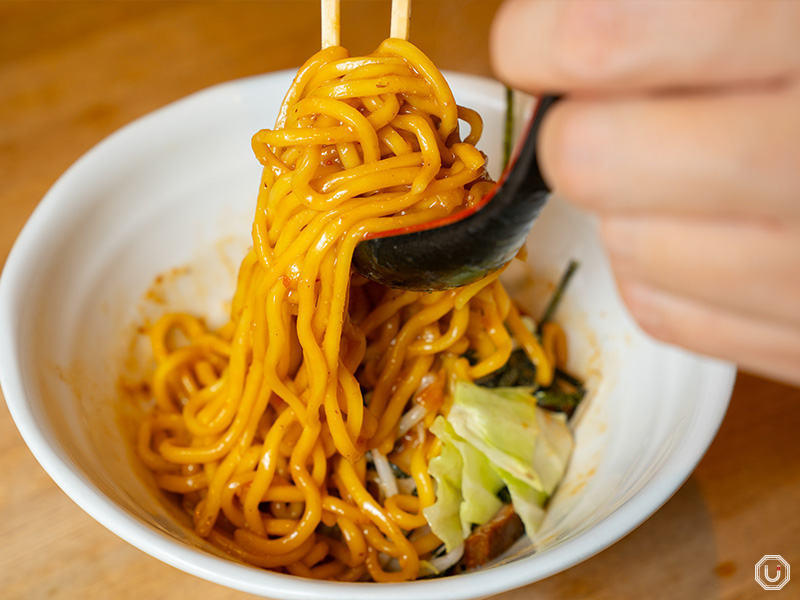
Customize with free seasonings and fun toppings
If you want to change things up mid-meal, try the free seasonings on the table.
Ichimi tōgarashi chili powder adds heat, while sanshō (Japanese pepper), a traditional Japanese spice, adds a vibrant, complex aroma and a pleasant numbing sensation. Chopsticks and paper bibs are also available at the table.
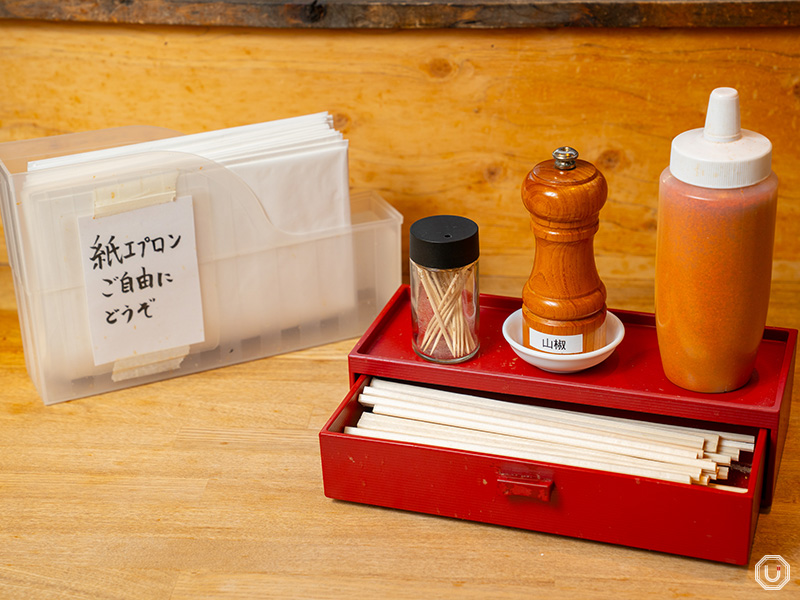
Sansho pairs especially well with the “Miso Mazesoba.” Freshly ground in a mill, it has a pronounced aroma and enjoyably transforms the dish.
Miso ramen restaurants offering sansho are rare, so definitely be sure to give it a try.
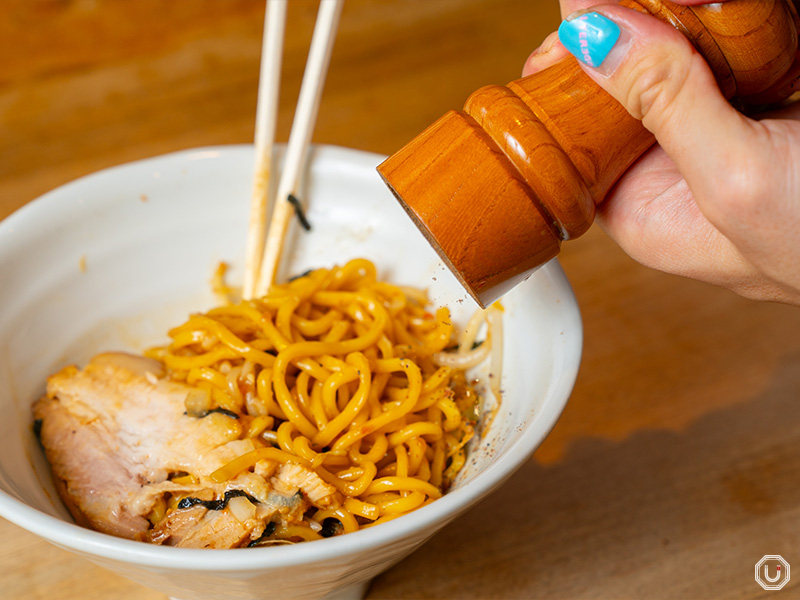
Other paid toppings are available, such as nori seaweed (“sheet laver” on the menu) to add ocean fragrance and ajitama (soft-boiled seasoned egg), allowing you to customize to your preference.
The Umami bites editorial team recommends adding iwanori seaweed (“flake laver” on the menu) topping to the Miso Ramen. As this flaky seaweed dissolves into the soup, it adds a rich and robust flavor.
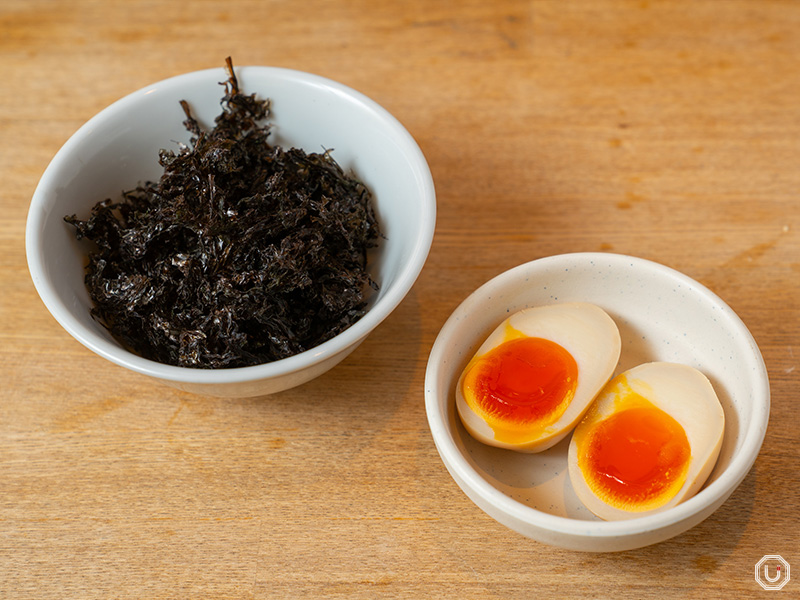
(left) “岩海苔,” Flake laver 250 JPY (tax included), (right) “味玉,” Soft-boiled seasoned egg 120 JPY (tax included)
The shop uses a ticket system. Purchase your meal ticket in advance from the vending machine. In addition to the Japanese menu, there’s an English one posted above the machine for easy reference.
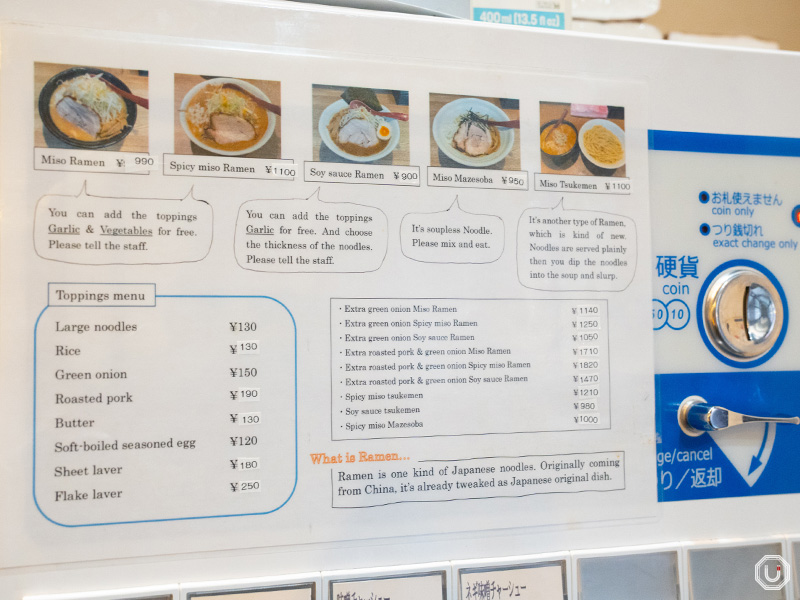
Experience the full appeal of miso ramen in all its forms at Manbaken Daidai in Ikebukuro!
Information
| Store name | 萬馬軒 橙 池袋店 Manbaken Daidai Ikebukuroten |
|---|---|
| Address | 1-24-6 Nishi-Ikebukuro, Toshima-ku, Tokyo
|
| Access |
Ikebukuro Station 2-minute walk from exit 17
|
| Phone number | 03-5992-2273 |
| Reservations | Not accepted |
| Payment |
|
| Service charge / Table charge | None |
| Hours | 11:00-24:00 |
| Closed | No holidays |
| Seating | 12 counter seats |
| Smoking | All seats are non-smoking |
| Official website | None |
| Other information |
|
※Menu contents, prices, store information, etc. are current as of April 2025.
